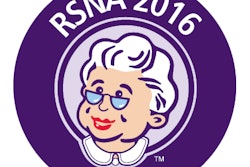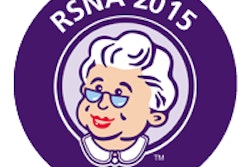
Over more than a decade, radiology has been on the receiving end of at least 12 payment cuts through various instruments such as the Deficit Reduction Act, code bundling, the U.S. Centers for Medicare and Medicaid Services' (CMS) Multiple Procedure Payment Reduction (MPPR), decreased practice expense per hour rates, and increased utilization factor rates.
These cuts have affected many aspects of patient care -- in particular, outpatient imaging, according to research presented at the recent RSNA 2015 meeting. Since 2001, all modalities have shown a shift in utilization from private offices to hospital outpatient departments, which could be bad news not just for patients, but also for healthcare's bottom line, concluded Dr. Bhavik Patel, of Thomas Jefferson University, and colleagues.
"Not only does this shift translate to a loss of patient access to advanced imaging, it also means costs have increased, since hospital outpatient departments are reimbursed at higher rates than private offices," Patel told session attendees.
Reason for concern
Patel's group conducted the research in response to concern that less reimbursement could lead to the closure of private imaging practices and, therefore, a shift in advanced outpatient imaging to hospitals. The group used Medicare data from 2001 to 2013 for the study, selecting CPT codes for MR, echocardiography, nuclear medicine, ultrasound, and CT and calculating procedure use rates per 1,000 Medicare beneficiaries for each year by location.
In particular, reimbursement rates for these modalities have been affected by CMS' code bundling efforts, Patel said:
- Echocardiography: In 2009, add-on codes for spectral Doppler and color flow Doppler echocardiography were bundled into the code for primary transthoracic echocardiography.
- Nuclear medicine: In 2010, codes for primary myocardial perfusion imaging and its two add-on codes for left ventricle wall motion and ejection fraction were combined.
- CT: In 2011, codes for CT of the abdomen and pelvis were bundled.
The result? The relative value units for the new single codes were substantially lower than the previous sum for the codes, producing large apparent drops in utilization, Patel said.
Total use rates per 1,000 Medicare beneficiaries for all of these exams in private offices grew 83% during the study time frame, from 478 in 2001 to 874 in the peak year of 2008, the researchers found. The overall rate then declined 42% in 2011, after CMS bundled codes for echocardiography, nuclear medicine, and CT. Although no further code bundling occurred in 2012 and 2013, the overall use rates for these exams continued to drop, from 503 in 2011 to 462 by 2013.
So what's been happening in hospitals? In 2012 and 2013, the hospital outpatient department imaging use rate for these modalities increased from 418 to 447 per 1,000 Medicare beneficiaries; in fact, the ratio of private office to hospital outpatient advanced imaging fell from 1.67 in 2008 to 1.03 in 2013.
Patel's group found similar individual modality shifts away from offices to hospital outpatient departments, he told session attendees.
| Office-to-hospital outpatient department ratios | ||
| Modality | 2008 | 2013 |
| CT | 0.54 | 0.44 |
| Echocardiography | 3.62 | 1.42 |
| MRI | 1.12 | 0.88 |
| Nuclear medicine | 2.59 | 0.90 |
| Ultrasound | 1.82 | 1.68 |
Bad news for patient care?
Less reimbursement has led to a shift in advanced imaging from private offices to hospital outpatient departments -- which could negatively affect patient care, according to Patel.
"This shift could portend a loss of access for patients to advanced imaging, and an increase in costs due to the higher reimbursements paid to hospitals," he concluded.




















